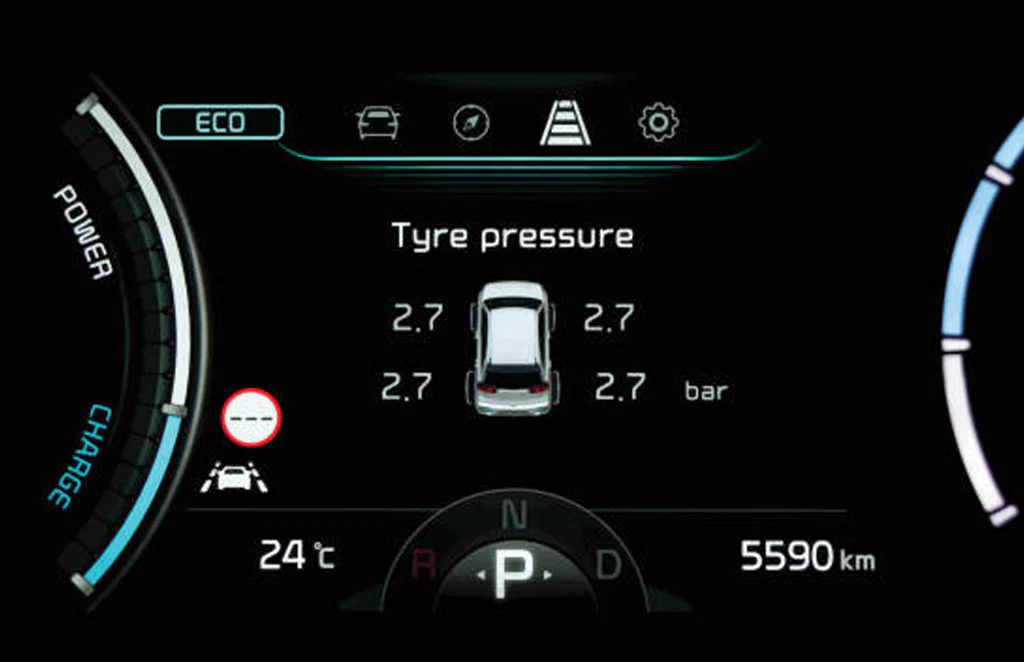Blog
The Legal Requirements for TPMS in Different Countries
The Legal Requirements for TPMS in Different Countries
Tire Pressure Monitoring Systems (TPMS) are increasingly being recognized as vital components in ensuring the safety and efficiency of vehicles. As global awareness of road safety grows, many countries have implemented or are considering regulations to make TPMS mandatory for all vehicles. These regulations aim to reduce the number of accidents caused by under-inflated tires, which can lead to tire blowouts, reduced fuel efficiency, and poor vehicle handling. In this article, we will explore the legal requirements for TPMS in different countries and the reasons behind these regulations.
What is TPMS?
Before diving into the legalities, let’s first understand what TPMS is. A Tire Pressure Monitoring System (TPMS) is a safety feature in modern vehicles designed to alert drivers when the pressure in one or more tires drops below a certain threshold. TPMS works by using sensors embedded in the tire to monitor air pressure. When the pressure becomes too low, the system triggers a warning light on the vehicle’s dashboard.
There are two main types of TPMS:
- Direct TPMS: Sensors mounted on the valve stem of each tire that measure the actual tire pressure and transmit that data to the vehicle’s computer system.
- Indirect TPMS: Measures tire pressure by monitoring the rotational speed of each wheel, using the vehicle’s Anti-lock Braking System (ABS) to infer tire pressure based on wheel speed variations.
Legal Requirements for TPMS Around the World
United States
In the United States, TPMS became a federal requirement for most passenger vehicles under the Tire Pressure Monitoring System (TPMS) Rule, which was enacted in 2000 by the National Highway Traffic Safety Administration (NHTSA). This rule mandates that all passenger cars, SUVs, and light trucks manufactured after September 1, 2007, must be equipped with a TPMS that meets specific standards.
- Direct TPMS vs. Indirect TPMS: The rule does not specify which type of system should be used, meaning both direct and indirect systems are allowed as long as they comply with the basic requirements.
- Functionality: TPMS in the U.S. must alert the driver when the tire pressure falls below 25% of the recommended level for a particular tire, whether the vehicle is stationary or in motion.
- Warning Indicators: The vehicle’s dashboard must display a low tire pressure warning light that will remain on until the issue is resolved.
European Union
The European Union took a similar approach but implemented stricter regulations. In 2014, the EU passed a law requiring all new passenger vehicles, including SUVs and light commercial vehicles, to be equipped with a TPMS system as standard.
- Direct TPMS: While the EU law does not mandate the use of direct TPMS, it has become the preferred choice due to its higher accuracy in monitoring tire pressure.
- Requirements: According to the EU regulation, TPMS must alert the driver when tire pressure is at least 20% lower than the recommended pressure. Additionally, it must provide a visual and audible warning for low pressure.
- Exemptions: Certain vehicle categories, such as those weighing under 3.5 tons or those manufactured before 2014, are exempt from the regulation.
Canada
Canada’s approach to TPMS is quite similar to that of the U.S., largely due to its close proximity and shared regulatory framework with the U.S. However, the Canadian regulations are overseen by Transport Canada.
- Mandates: TPMS became mandatory for all light-duty vehicles in 2009.
- Functionality: Like the U.S., Canadian regulations require a TPMS system that alerts the driver when tire pressure is low by 25% or more.
- Penalty for Non-Compliance: If a vehicle is found to be missing a functional TPMS or the system is not working, the owner could face penalties during inspections.

Australia
Australia has adopted a similar stance toward TPMS, although the implementation timeline has been somewhat slower compared to other regions.
- Passenger Vehicles: Since 2012, TPMS is mandatory for all new vehicles in Australia.
- Direct TPMS Preference: Australia encourages the use of direct TPMS for more accurate and reliable readings, although indirect systems are still allowed in certain circumstances.
- Regulations: Australian regulations require TPMS to warn the driver if the tire pressure is at least 20% below the recommended level, similar to EU rules.
China
China has also moved towards adopting more stringent road safety measures, and TPMS is part of these regulations.
- TPMS Law: Since 2019, all new vehicles in China have been required to come equipped with a TPMS system.
- Implementation: The system must provide a low-pressure warning when the tire pressure falls below 30% of the recommended level.
- Type of TPMS: The government favors direct TPMS systems for their accuracy and effectiveness in preventing road accidents due to tire failure.
Japan
In Japan, TPMS regulations are a bit more lenient, but the country is still moving toward incorporating these systems into most vehicles for safety purposes.
- Implementation: TPMS was made mandatory for most vehicles under the Road Transport Vehicle Act in 2012.
- Direct TPMS: While direct TPMS is encouraged, indirect TPMS is also permitted for some vehicle types.
- Functionality: The system must alert the driver when the tire pressure is 25% below the recommended level.
India
India’s adoption of TPMS has been slower than in some other countries, but the government is beginning to recognize its importance, especially in the context of increasing vehicle safety standards.
- Mandate for New Vehicles: India has announced that starting in 2023, TPMS will be required for all new vehicles with a gross weight of more than 2.5 tons.
- Purpose: The goal is to reduce road accidents caused by tire failure, which is a significant issue in India due to poor road conditions and tire under-inflation.
Why TPMS Is Becoming a Global Standard
As road safety continues to be a priority worldwide, TPMS systems are becoming an essential tool in reducing accidents caused by tire-related issues. The regulations for TPMS are largely driven by:
- Safety Concerns: Under-inflated tires are a major contributor to accidents, particularly in adverse weather conditions or when driving at high speeds. TPMS helps mitigate these risks by providing real-time alerts to drivers.
- Fuel Efficiency: Proper tire inflation reduces rolling resistance, which improves fuel efficiency and lowers emissions.
- Environmental Impact: By ensuring tires are properly inflated, TPMS also reduces the environmental impact by helping drivers achieve better fuel economy and less tire wear.
- Public Awareness: Many governments are investing in increasing road safety awareness, which includes educating drivers about the importance of proper tire pressure and the role of TPMS in maintaining it.

Conclusion
The legal requirements for TPMS vary from country to country, but the trend is clear—TPMS is becoming a vital part of vehicle safety regulations worldwide. Whether you’re driving in the United States, Europe, or Asia, understanding these requirements is essential for both vehicle owners and manufacturers. TPMS not only enhances safety but also helps drivers maintain their vehicles more efficiently, contributing to longer tire life and better fuel economy.
At RegalXMuse, we provide high-quality TPMS sensors and related products to help you stay compliant with local regulations and ensure the safety of your vehicle. Whether you’re looking to upgrade your current system or need replacements for your sensors, we have everything you need.


